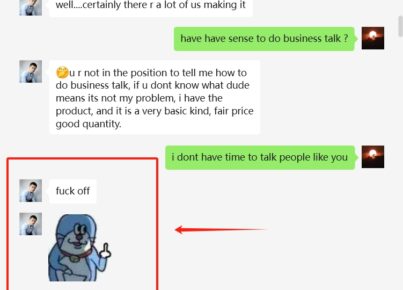Introduction:
In today’s competitive business landscape, organizations strive not only for success but also for a culture of excellence. And at the heart of achieving excellence lies a strong and thriving office culture. Culture, shaped by leadership, plays a pivotal role in creating an environment where employees are inspired, engaged, and driven to perform at their best. In this blog, we will explore the essential elements of leadership that contribute to shaping a culture of excellence within an organization.
Defining a Culture of Excellence:
Before delving into the role of leadership, it’s crucial to understand what a culture of excellence entails. A culture of excellence is characterized by a shared commitment to continuous improvement, the pursuit of high standards, and a focus on delivering exceptional results. It goes beyond mere compliance and mediocrity, encouraging individuals to go above and beyond their responsibilities and exceed expectations. Such a culture fosters creativity, innovation, and a drive for excellence across all levels of the organization.
The Role of Leadership in Cultivating Excellence:
Leadership plays a central role in cultivating a culture of excellence within an organization. Influential leaders set the tone, establish the vision, and create an environment where excellence can thrive. Here are some key ways in which leaders shape a culture of excellence:
1. Setting the Vision and Values:
Leaders articulate a compelling vision that inspires and motivates employees to strive for excellence. They define the core values that underpin the organization’s culture and guide decision-making at every level. By setting a clear direction, leaders align the efforts of individuals and teams toward a common goal.
2. Leading by Example:
Leaders who exemplify excellence in their actions and behaviors inspire others to follow suit. They demonstrate a strong work ethic, integrity, and a commitment to quality. Leading by example creates a powerful ripple effect throughout the organization, influencing others to uphold high standards.
3. Empowering and Inspiring Employees:
Leaders empower their teams by providing them with the autonomy, resources, and support needed to excel. They foster a culture of trust and encourage employees to take ownership of their work. By providing meaningful feedback, recognition, and opportunities for growth, leaders inspire employees to reach their full potential.
4. Fostering a Culture of Continuous Improvement:
Leaders encourage a growth mindset and promote a culture of continuous learning and improvement. They foster an environment where mistakes are viewed as opportunities for growth, and innovation is embraced. Leaders invest in training and development programs that enhance employees’ skills, knowledge, and capabilities, enabling them to deliver exceptional results.
Building Trust and Accountability:
Building a culture of excellence requires a foundation of trust and accountability. Effective leaders create an environment where individuals feel safe to take risks, share ideas, and collaborate without fear of judgment. Here’s how leaders can cultivate trust and accountability within their teams:
1. Establishing Open and Transparent Communication:
Leaders foster trust by promoting open and transparent communication channels. They encourage honest and constructive dialogue, ensuring that information flows freely within the organization. This transparency builds trust and helps employees feel valued and included in the decision-making process.
2. Encouraging Feedback and Constructive Criticism:
Leaders create a culture where feedback is not only welcomed but actively sought out. They provide regular opportunities for individuals to share their perspectives, ideas, and concerns. Constructive criticism is viewed as a valuable tool for growth and improvement, rather than a personal attack. By encouraging feedback, leaders empower their teams to continuously learn and evolve.
3. Holding Oneself and Others Accountable:
Accountability starts at the top. Leaders lead by example and hold themselves accountable for their actions and decisions. They set clear expectations, establish performance metrics, and provide regular feedback to ensure individuals take responsibility for their work. When leaders demonstrate their commitment to accountability, it sets the tone for the entire organization.
4. Creating a Safe and Supportive Environment for Taking Risks:
Leaders encourage a culture where individuals feel comfortable taking calculated risks and challenging the status quo. They foster an atmosphere where mistakes are seen as opportunities for learning and growth rather than failures. By providing support, guidance, and resources, leaders empower employees to explore new ideas and solutions, leading to innovative outcomes.
Developing High-Performing Teams:
Leadership that fosters a culture of excellence recognizes the power of high-performing teams. These teams possess a collective drive, synergy, and a shared commitment to achieving exceptional results. Here are key strategies for leaders to develop high-performing teams within a culture of excellence:
1. Building Diverse and Complementary Teams:
Leaders embrace diversity and create teams with individuals who bring different skills, backgrounds, and perspectives. By assembling diverse teams, leaders leverage a variety of talents, ideas, and experiences, leading to more innovative and robust solutions. They ensure team members’ strengths and expertise complement each other, enabling the team to perform at its best.
2. Promoting Collaboration and Synergy:
Leaders foster a collaborative environment where team members work together towards a common goal. They encourage open communication, active listening, and effective collaboration techniques. Leaders establish shared objectives, promote cooperation, and create opportunities for cross-functional teamwork, enhancing synergy and collective problem-solving.
3. Providing Opportunities for Growth and Development:
Leaders prioritize the growth and development of their team members. They invest in training programs, mentorship initiatives, and professional development opportunities. By supporting their team’s ongoing learning and skill enhancement, leaders nurture a culture of continuous improvement and help individuals reach their full potential.
4. Recognizing and Rewarding Achievements:
Leaders celebrate and acknowledge the achievements of their team members. They provide regular feedback, recognition, and rewards to motivate and inspire individuals to sustain their exceptional performance. Leaders understand the importance of valuing and appreciating the contributions of each team member, fostering a sense of pride and fulfillment.
Nurturing a Learning Culture:
Leadership that fosters a culture of excellence understands the significance of continuous learning and growth. They create an environment where curiosity is encouraged, ongoing training and development are supported, and innovation and adaptability are promoted. Here are key strategies for leaders to nurture a learning culture within a culture of excellence:
1. Encouraging Curiosity and Knowledge Sharing:
Leaders cultivate a sense of curiosity by encouraging employees to ask questions, explore new ideas, and seek out knowledge. They create platforms for knowledge sharing, such as regular team meetings, workshops, or internal forums. By fostering a culture of curiosity, leaders stimulate innovation and creativity within the organization.
2. Supporting Ongoing Training and Development:
Leaders prioritize the professional development of their team members by providing access to training programs, workshops, conferences, and other learning opportunities. They understand that investing in continuous learning not only enhances individual skills but also strengthens the collective capabilities of the team. Leaders actively support and promote a growth mindset throughout the organization.
3. Embracing a Growth Mindset:
Leaders model and promote a growth mindset—a belief that abilities and intelligence can be developed through dedication, effort, and learning. They encourage individuals to embrace challenges, view failures as learning opportunities, and persist in the face of setbacks. By fostering a growth mindset, leaders inspire a culture of resilience, adaptability, and continuous improvement.
4. Promoting a Culture of Innovation and Adaptability:
Leaders create an environment that values and rewards innovation, experimentation, and adaptation. They encourage employees to think creatively, challenge conventional approaches, and explore new solutions. Leaders provide resources and support for innovative projects, establish feedback loops for learning, and celebrate successful innovations. This fosters a culture that embraces change and thrives in dynamic business environments.
Aligning Systems and Processes with Excellence:
Leadership that fosters a culture of excellence understands the importance of aligning systems and processes with the desired outcomes. They ensure that organizational goals are clear, workflows are streamlined, and practices are efficient and effective. Here are key strategies for leaders to align systems and processes with excellence within a culture of excellence:
1. Ensuring Clarity of Goals and Expectations:
Leaders establish clear and measurable goals that align with the organization’s vision and values. They communicate these goals effectively to the entire team, ensuring that everyone understands their roles and responsibilities. By providing clarity, leaders enable individuals to work towards a common purpose and make informed decisions.
2. Streamlining Workflows and Removing Obstacles:
Leaders analyze existing workflows and identify areas for improvement. They eliminate unnecessary bureaucracy, simplify processes, and remove obstacles that hinder productivity and efficiency. By streamlining workflows, leaders optimize resources, minimize waste, and create a more agile and effective work environment.
3. Encouraging Efficient and Effective Practices:
Leaders encourage individuals to adopt efficient and effective practices that enhance productivity and quality. They promote technology usage and automation where applicable, implement best practices, and provide training on tools and techniques that can streamline work processes. By embracing efficiency, leaders empower their teams to deliver exceptional results on time.
4. Incorporating Feedback Loops for Continuous Improvement:
Leaders establish feedback loops and mechanisms for continuous improvement. They encourage employees to provide feedback on processes, systems, and workflows, and they take this feedback seriously. By actively seeking input and incorporating suggestions for improvement, leaders can create an environment of continuous learning and refinement.
Sustaining Excellence in the Long Run:
Leadership that fosters a culture of excellence understands that sustaining excellence requires ongoing effort and attention. It involves regular evaluation, adaptation to change, nurturing and retaining top talent, and celebrating and reinforcing achievements. Here are key strategies for leaders to sustain excellence within a culture of excellence:
1. Regularly Evaluating and Reassessing the Culture:
Leaders understand the importance of periodically evaluating the organizational culture to ensure it remains aligned with the desired outcomes. They collect employee feedback, conduct surveys, and perform culture assessments to identify areas of improvement. By continuously monitoring the culture, leaders can make informed decisions and implement necessary changes to sustain excellence.
2. Adapting to Changing Circumstances and Challenges:
Leaders recognize that change is inevitable and that external circumstances and challenges will arise. They foster an agile and adaptable culture that can respond effectively to change. Leaders promote a mindset of resilience and flexibility, encourage innovative problem-solving, and provide the necessary support and resources to navigate through challenges and maintain excellence.
3. Nurturing and Retaining Top Talent:
Leaders understand that excellence thrives when there is a team of talented and engaged individuals. They prioritize the recruitment and retention of top talent by creating a supportive and fulfilling work environment. Leaders provide opportunities for growth and development, recognize and reward high performers, and foster a culture that values and appreciates its employees. By nurturing top talent, leaders ensure a sustainable culture of excellence.
4. Celebrating and Reinforcing Achievements:
Leaders celebrate achievements and reinforce the desired behaviors and outcomes that contribute to excellence. They acknowledge individual and team successes, publicly recognize exceptional performance and create a culture of appreciation and celebration. By highlighting and reinforcing achievements, leaders inspire and motivate employees to continue striving for excellence.
Conclusion:
Leadership plays a crucial role in shaping a culture of excellence within an organization. By setting the vision, fostering trust and accountability, developing high-performing teams, nurturing a learning culture, aligning systems and processes, and sustaining excellence in the long run, leaders create an environment where excellence can thrive. Through their actions and behaviors, leaders inspire individuals to exceed expectations and achieve exceptional results, making a significant impact on the organization’s overall success.
Remember, leadership in action is the key to shaping a culture of excellence. As leaders, it is our responsibility to foster an environment that encourages growth, innovation, collaboration, and continuous improvement. By doing so, we can create a workplace where excellence becomes the norm and where individuals can truly thrive.
Let’s embark on this journey of shaping a culture of excellence together!





You must be logged in to post a comment.